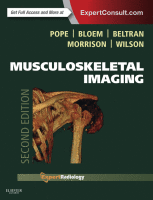Physical Address
304 North Cardinal St.
Dorchester Center, MA 02124

Techniques Chemical Ablation with Sclerosing Agents Sclerosing agents act by diffusion into cells and cause immediate dehydration of cytoplasm with subsequent necrosis followed by fibrosis. By entering into the circulation, these agents induce necrosis of endothelial cells and platelet aggregation,…

Percutaneous biopsy of the spine is an effective, reliable, safe, and rapid procedure that can be easily performed in comparison with open biopsy. It may be performed at a lower cost than surgery. This procedure has become routine and is…

Percutaneous biopsy of the appendicular skeletal lesion is a minimally invasive, safe, and inexpensive procedure compared with open biopsy. Therefore, this procedure is indicated in many cases. Indications Bone Metastases A suspicion of bone metastasis is the main indication for…

Abstract Indications The incidence of soft tissue sarcomas in the general population is very low, 1.4 to 2.7 per 100,000, increasing for patients 80 years of age and older to 8 per 100,000. The majority (59%) of soft tissue sarcomas…

Abstract Normal variants in the skeleton are commonly encountered in the practice of radiology. Kohler was the first to seriously address this subject in his book, Borderlands of the Normal and Early Pathologic Findings in Skeletal Radiology, which was published…

Diagnosis of Mandibular and Maxillary Lesions The mandible and maxilla are unique bones in that they both contain teeth and tooth-forming tissues. This fact is responsible for the high rate of inflammatory diseases, such as osteomyelitis and of lesions of…

Pathophysiology Anatomy The temporomandibular joint (TMJ) is a diarthrodial joint bounded by the glenoid fossa and articular eminence of the temporal bone above and the mandibular condyle below (see Video 114-1 ). A joint capsule extends from the posterior portion…

Etiology Postoperative infection of the hip and knee may occur in a myriad of clinical settings, including systemic infection or illness, blunt or penetrating trauma, or following medical intervention. Infection is both a primary complication and a medium through which…

Amputation surgery is an ancient procedure dating back to prehistoric times. Although there have been numerous advances in limb salvage techniques, amputation is still performed today and may be the treatment of choice in cases of severe vascular disease, severe…

More than 200 distinct operations are performed in the ankle and foot. Indications for operative intervention include traumatic, overuse, degenerative, arthritic, congenital, neoplastic, and inflammatory conditions. Procedures unique to the foot and ankle are reviewed here, with emphasis on the…